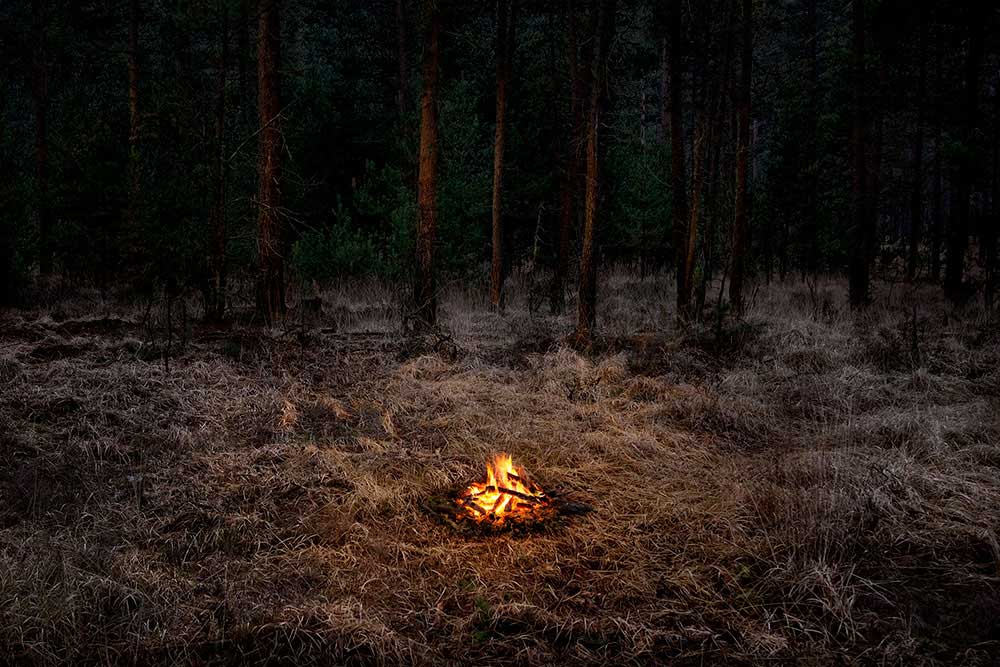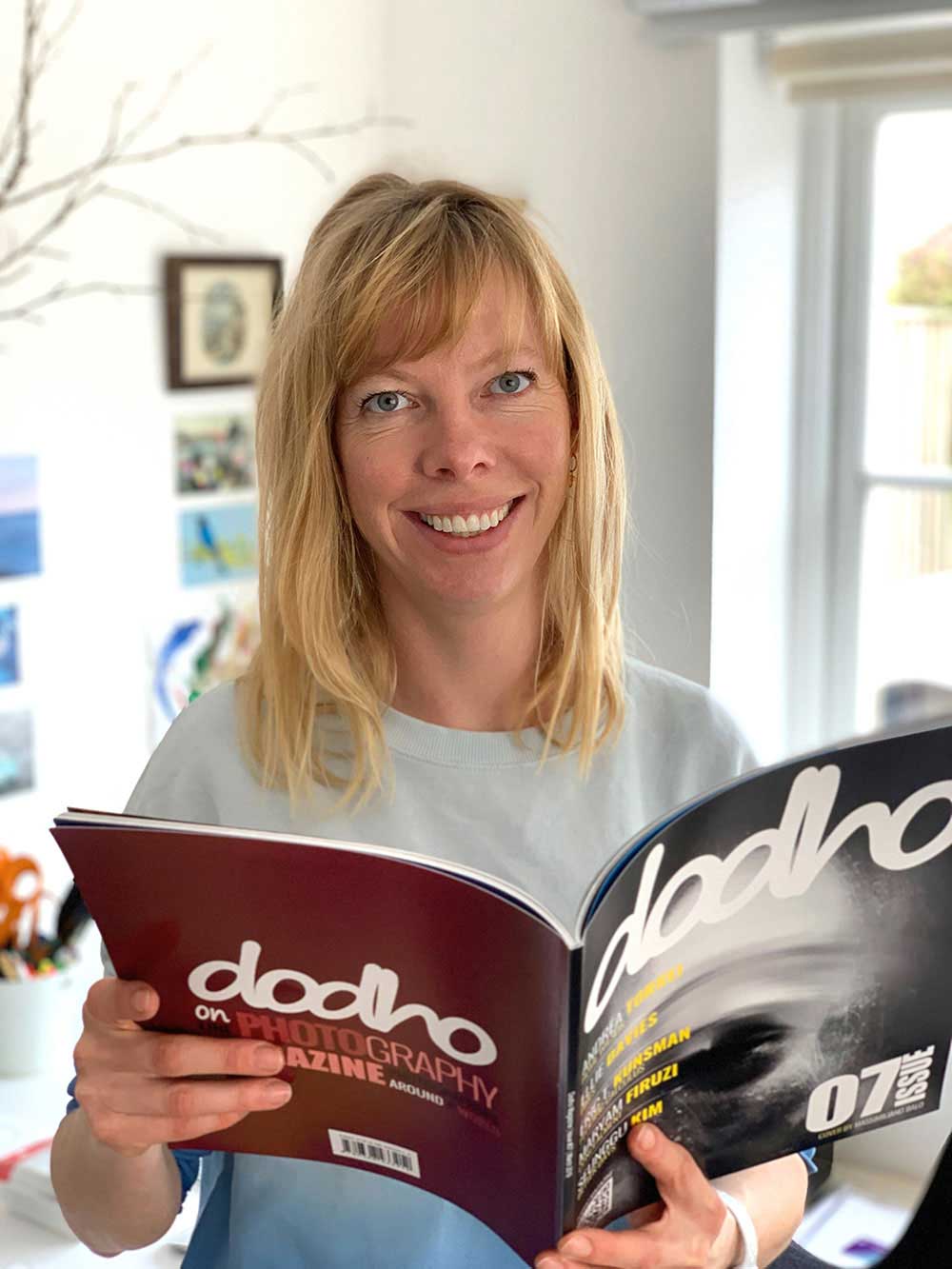Ellie Davies (Born 1976) lives in Dorset and works in the woods and forests of Southern En- gland. She gained her MA in Photography from London College of Communication in 2008.
Davies is represented by Patricia Armocida Gallery in Milan, Susan Spiritus Gallery in New- port Beach, California, A.Galerie in Paris and Brussels, Brucie Collections in Kiev and Crane Kalman Brighton Gallery in the UK. [Print Version] [Digital Version][Official Website]
Can you tell us a little about yourself?
I grew up in the New Forest in the South of England. My studies include Art Foundation (1995), a Psychology degree (1999), The Professional Photography Practice course at London College of Printing (2006) and an MA in Photography from London College of Communication (2008). I lived in London for the last 20 years before my recent move to Dorset in the South of England.
How did you get interested in photography?
I am lucky to have a creative family background. My Dad was a passionate photographer and camera collector. We had a small dark room at home and his excitement about developing film and printing was infectious. My mum is a painter and we have lots of other artists in the family so I aspired to do something creative from an early age. My mum actively encouraged creativity of any sort and particularly painting. She taught me how to really look and how to observe colour, about perspective and composition as well as a wonderfully free approach to painting and drawing.
What inspired you take your “Fires” project?
I was interested in the way that even the smallest evidence of human presence skews an image and inscribes it with narrative. It invites us into the image.
The small fires in this series link us back to the earliest inhabitants of woodlands, it forms a direct timeline from the very distant past to the present day. Photography is always a form of time travel and in these images the viewer is left to weave their own experience into the woodland, to imagine themselves sitting down beside the fire, to enter the scene.

How would you define your general style photography?
I see my work as landscape photography in which I make small, temporary sculptural or visual interventions, bringing a presence into the space in order to explores my relationship with the landscape.
Could you please tell us anything about your technique and creating process?
I use a very lightweight kit because my practice involves lots of walking. I use a Pentax 654Z with two lenses and a tripod. I also carry an umbrella that clamps to the tripod so I can work in the rain. I prefer to work in dark, overcast or wet weather so I have to be prepared and I’ve recently started using a bike as it enables me to travel further.
I choose locations based on an instant feeling about a place, I walk until I find a place that works for the particular image I have in mind. It doesn’t work being too rigid beforehand. I usually have a vague idea of what I am looking for in my mind but I try to be flexible and work with what I find.
In your opinion, what makes a good Fine art Photography
That’s a pretty impossible question, it is just so personal. I love looking at landscape images because that is what I’m primarily interested in but everybody is looking for something different from an image, its about what you bring to the viewing process.
How much preparation do you put into taking a photography?
It very much depends where I am within a series, at the very beginning I need to do a Iot of preparation, I make drawings, visit locations, list and sketch lots of possible ideas, scenes and materials. As the series develops I become more sure of where it is going and what I’m trying to do so less planning is needed.
What do you think makes a memorable project?
For me a memorable project is one that sticks in the mind long after viewing it. It resonates over time and remains vivid. For me it is usually landscape images that do this. Its hard to pinpoint why one image or series might particularly strike you but I think its often that there is a visual way-in to the image, a subtle narrative suggested either outside the frame or in the imagination more than in the image itself.
How do you know you got the shot you wanted?
Anyone whose ever taken pictures or done anything creative will know the feeling when they get the shot they wanted, you just know when its right.
Your idea of the perfect composition?
I would say that this varies for each image but I love symmetry. In fact I often find myself so drawn to a symmetrical composition that I have to intentionally try to deviate from it. There is something so alluring and simple about two trees standing together but this would lead to very repetitive work so I try to broaden my scope within each series.
What would iI find in your Camera Bag?
My camera bag has a Pentax 645Z, two wide lenses, gardening gloves and a small saw for moving dead branches or small tree trunks. A buggie umbrella and clamp that attaches to my tripod in wet weather. Flash of tea and food for the day.
What future plans do you have? What projects would you like to accomplish?
I would love to make some work in forests abroad; particularly the Pacific North West, Japan, Ukraine, Puerto Rico, Costa Rica.
Finally, one las question. What opinion do you have of our print edition?
The recent print edition is fantastic, you’ve been kind enough to give me seven double-page spreads with a beautiful and comprehensive overview of my most recent series – Fires, 2018. The paper and print quality are also exceptional, thanks again Dodho Magazine!







